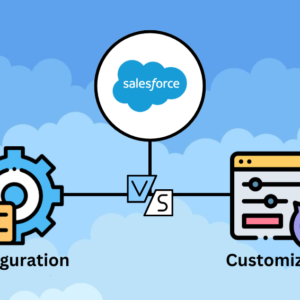In today’s digital landscape, data exchange has become the backbone of communication between systems, businesses, and even countries. A vast majority of this data is structured and transmitted using eXtensible Markup Language (XML). XML is widely used because of its versatility, readability, and adaptability across various platforms and industries. However, as systems grow more interconnected, the challenge of validating XML consistently across different environments has become a significant issue. This is where the XML Validation Interoperability Framework (XVIF) comes into play.
XML and XVIF
Data-driven systems depend heavily on accurate and consistent information. In many cases, XML serves as the medium of exchange. However, the diversity of systems handling XML—each potentially interpreting or validating XML differently—can lead to interoperability challenges. Validation is a crucial step in ensuring the integrity of data being transmitted, ensuring the structure and content conform to agreed-upon standards such as XML Schema or Document Type Definitions (DTDs).
The problem arises when validation processes in one system differ from those in another. A document that passes validation in one environment might fail in another, leading to data inconsistency, errors in communication, and potential breakdowns in critical processes. The XML Validation Interoperability Framework (XVIF) was developed to address these discrepancies by creating a uniform framework that ensures XML validation results are consistent across different systems.
In this article, we will explore the importance of XML validation, the role of XVIF in solving interoperability issues, and how it functions in diverse environments to create more reliable, seamless XML-based communications.
What is XVIF?
XVIF (XML Validation Interoperability Framework) is a comprehensive framework designed to standardize XML validation across different platforms and systems. It ensures that XML documents are validated in a consistent manner, regardless of the environment or software being used. The framework bridges the gap between varying validation methods, which often arise due to differences in validation engines, XML parsers, or even the configurations of these systems.
At its core, XVIF allows organizations to ensure that XML validation conforms to a standard set of rules, eliminating discrepancies that could lead to data corruption, system failures, or miscommunication between parties. This framework facilitates the seamless exchange of data, especially in environments where multiple platforms and technologies interact.
By providing a common approach to validation, XVIF makes XML more reliable for organizations that depend on its accurate interpretation in areas such as finance, e-commerce, government, and healthcare, where standardized data is critical.
Why XML Validation is Crucial
XML validation ensures that data conforms to a pre-defined structure, usually through the use of a schema or DTD. The primary goal is to confirm that the XML document is both well-formed (i.e., it follows basic syntactic rules) and valid (i.e., it adheres to the rules defined in the schema or DTD).
Without proper validation, data exchanged between systems can lead to:
- Corruption: Invalid XML can cause system errors or data corruption, leading to loss of critical information.
- Communication breakdowns: Two systems exchanging XML might interpret the data differently if one system rejects an XML file that the other accepts.
- Security risks: Invalid or malformed XML can be exploited by malicious actors, leading to vulnerabilities in systems that handle sensitive data.
For example, a retail system transmitting purchase orders in XML format must ensure that every XML document is valid. If one system does not validate the documents in the same way as the others, it can cause discrepancies, such as missing fields, incorrect data types, or broken relationships within the document.
How XVIF Addresses Interoperability
XML validation, while a powerful tool, can often suffer from inconsistencies between systems, especially in complex enterprise environments where many applications and technologies must communicate flawlessly. XVIF tackles this problem by providing a standard, comprehensive approach to validation, ensuring uniformity and interoperability.
Here’s how XVIF achieves that:
Standardization of Validation Engines
Different XML validation engines (like those built into Java, Python, .NET, etc.) might interpret XML rules slightly differently. XVIF defines a standardized set of rules and processes for validation, making sure that the results are the same regardless of the engine used.
Cross-Platform Consistency
XVIF offers guidelines for ensuring that XML validation results are consistent across different operating systems, programming languages, and validation engines. This guarantees that an XML file validated on a Windows-based system will yield the same results when validated on a Linux or macOS system.
Modular and Extensible Architecture
XVIF is designed to be modular, allowing organizations to adapt it to their specific needs. Its extensible architecture allows the framework to grow with the business, integrating new validation techniques or supporting new XML-based standards as they evolve.
Centralized Error Handling
One of the most powerful features of XVIF is its centralized error handling and reporting system. When an XML validation fails, XVIF not only reports the error but also provides detailed information that allows developers to quickly resolve the issue. This makes debugging XML documents faster and more efficient, reducing downtime and ensuring smoother data exchanges.
Key Features of XVIF
XVIF offers a range of features that make it a highly effective tool for ensuring XML validation interoperability. Some of its most notable features include:
Support for Multiple Standards
XVIF supports multiple XML standards, including:
- XML Schema: A widely used language for defining the structure and constraints of XML documents.
- RELAX NG: A simpler, flexible XML schema language that is often preferred for certain types of data validation.
- Schema Tron: A rule-based validation language that is more focused on checking the content of XML documents than on their structure.
This flexibility makes XVIF adaptable to a wide range of use cases, from web applications to highly regulated industries like finance and healthcare.
Platform-Agnostic Validation
XVIF ensures that XML validation can be performed consistently, regardless of the operating system or validation software being used. This cross-platform support is essential for businesses that operate in a heterogeneous IT environment.
Comprehensive Validation Reporting
XVIF provides detailed error reporting, ensuring that when validation fails, developers have the necessary information to quickly diagnose and fix the problem. This reduces the time spent debugging XML documents and allows for faster, more efficient development cycles.
Integration with Enterprise Systems
XVIF is designed to easily integrate with enterprise systems, making it an ideal solution for large organizations that rely heavily on XML for data exchange. It can be embedded into existing workflows and systems, ensuring that validation happens automatically and without disruption.
XVIF Use Cases
XVIF has practical applications across a variety of industries. Some common use cases include:
Enterprise Data Exchange
In large enterprises, data exchange between departments, subsidiaries, and partners often involves XML. XVIF ensures that this data is validated correctly across different systems, preventing errors that could disrupt business processes.
Cloud-Based Services
Cloud platforms handle large volumes of XML data as they interact with various applications and services. XVIF ensures that XML documents are validated consistently, preventing data mismatches and communication issues in cloud environments.
E-Commerce Platforms
E-commerce platforms rely on XML to manage product listings, transactions, and customer data. XVIF helps ensure that these XML files are validated correctly, preventing issues such as missing product information or invalid customer orders.
Benefits of Implementing XVIF
The benefits of implementing XVIF are numerous, making it an invaluable tool for organizations that depend on XML for their operations:
Improved Data Consistency
XVIF eliminates inconsistencies in XML validation results, ensuring that data is always structured correctly and meets the agreed-upon standards. This prevents errors and reduces the risk of miscommunication.
Faster Troubleshooting
With XVIF’s detailed error reporting and centralized validation framework, troubleshooting XML validation issues becomes much easier. This speeds up the development process and reduces downtime caused by validation errors.
Seamless Integration
XVIF can be integrated seamlessly into existing workflows and systems, allowing businesses to implement it without significant disruptions. This makes it a cost-effective solution for ensuring XML validation consistency.
Enhanced Security
By ensuring that XML documents are always valid, XVIF helps prevent security vulnerabilities that could arise from malformed or invalid XML documents. This is especially important in industries that handle sensitive data, such as healthcare and finance.
Challenges and Considerations
While XVIF offers many benefits, there are a few challenges and considerations to keep in mind:
Legacy System Compatibility
Some older systems may not be fully compatible with XVIF, requiring updates or modifications to ensure proper XML validation. Businesses should evaluate their existing systems and determine whether they need to make adjustments before implementing XVIF.
Initial Setup Complexity
Setting up XVIF can be complex, especially for organizations with large, interconnected systems. However, the long-term benefits of consistent XML validation far outweigh the initial setup challenges.
Training and Adoption
Employees may require training to understand how XVIF works and how it can be used to improve XML validation processes. This is especially true for businesses that rely heavily on custom XML-based solutions.
Future of XML Validation and XVIF
As the world becomes increasingly interconnected, the need for reliable data exchange across platforms will only grow. XVIF will play a pivotal role in ensuring that XML remains a viable and trusted format for data exchange in the future. Emerging technologies, such as artificial intelligence and machine learning, will likely interact with XML in new ways, further increasing the need for robust validation frameworks like XVIF.
Conclusion
The XML Validation Interoperability Framework (XVIF) is an essential tool for ensuring that XML validation is consistent across different platforms and systems. By providing a standardized approach to validation, XVIF eliminates the discrepancies that can arise from using different validation engines or environments, ensuring that XML-based data exchange is reliable, secure, and accurate.
As businesses and industries continue to rely on XML for data exchange, XVIF will become an increasingly important framework for ensuring seamless communication between systems. Its ability to improve data consistency, streamline troubleshooting, and enhance security makes it a valuable asset for organizations that depend on XML for their operations.






